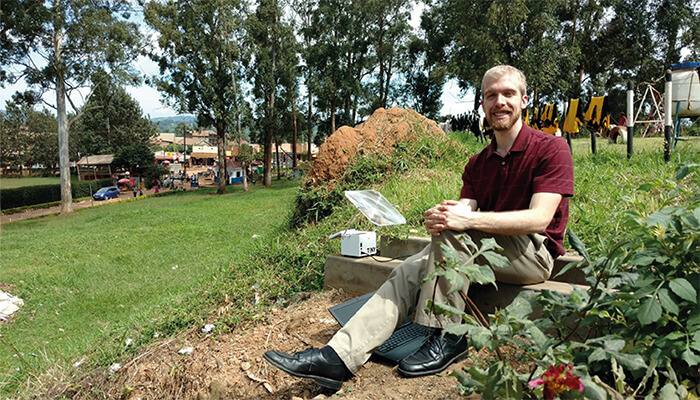Kaposi’s sarcoma (KS) presents a diagnostic challenge at the best of times: the disease can form masses in the skin, lymph nodes or elsewhere; lesions can be limited or widespread; they may be flat or raised; and each of the disease’s four subtypes may resemble a range of other conditions. Nevertheless, conclusive diagnosis is important, not only for treatment purposes, but also because KS is considered AIDS-defining, meaning that its presence in an HIV-positive patient makes the diagnosis of AIDS official. But histopathologic diagnosis – the standard approach – is not always possible in resource-limited settings, such as sub-Saharan Africa, where KS is endemic, and so KS is often diagnosed through macroscopic observation. Unfortunately, the disease’s heterogeneous nature means that clinical diagnosis is error prone.
It’s clear that a point-of-care testing device capable of circumventing the need for traditional testing would be invaluable. And so, a team of engineers, pathologists, dermatologists and clinical epidemiologists at Cornell University designed device that can be operated without electricity: the Tiny Isothermal Nucleic acid quantification sYstem – TINY, for short.

Jeffrey Martin, Professor of Epidemiology and Biostatistics at the University of California, San Francisco, helped determine the suitability and accuracy of the device. He explains the testing process: “A small biopsy of the affected skin is taken under local anesthetic. DNA is then extracted from the biopsy and tested for the presence of Kaposi’s sarcoma-associated herpesvirus (KSHV) DNA via a reaction known as loop-mediated isothermal amplification (LAMP).” Because LAMP needs samples to be heated 154°C, the assay cannot typically be conducted without a power source; what makes TINY unique is its ability to collect and store heat from any source, including the sun and Bunsen burners, allowing it to function without a reliable source of electricity.
Martin is currently working alongside colleagues to test the device’s accuracy across a broad range of conditions in Africa. At the same time, the team is establishing demand for TINY and seeking ways to keep its cost low. “Obviously, we need to make this as inexpensive as possible,” says Martin. “There is little point on working on such a project if we cannot make it affordable.”




